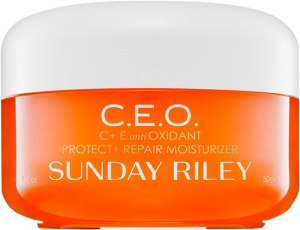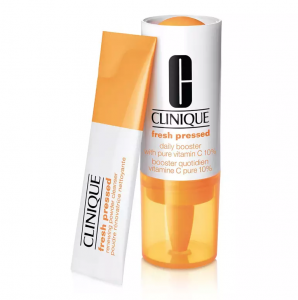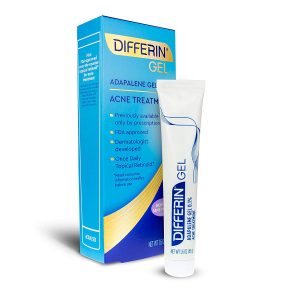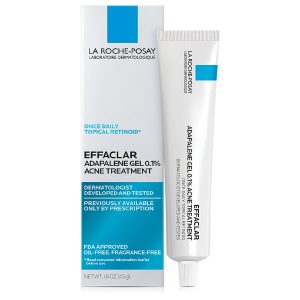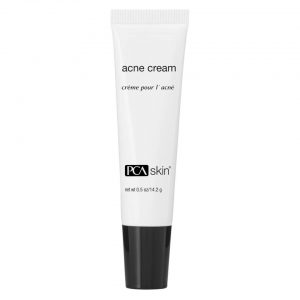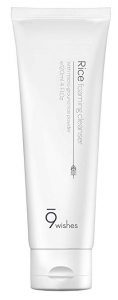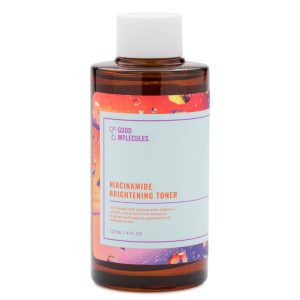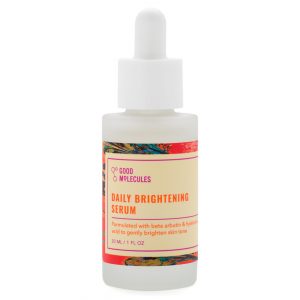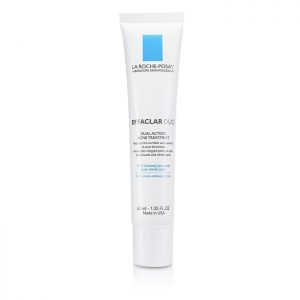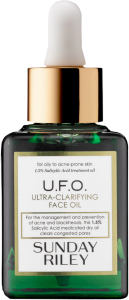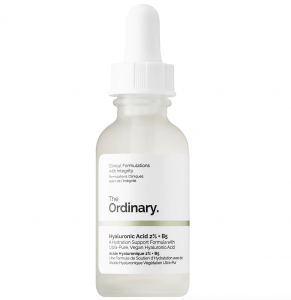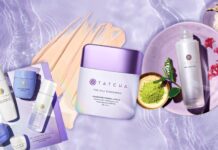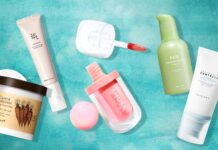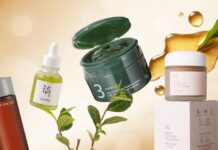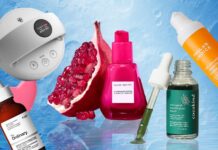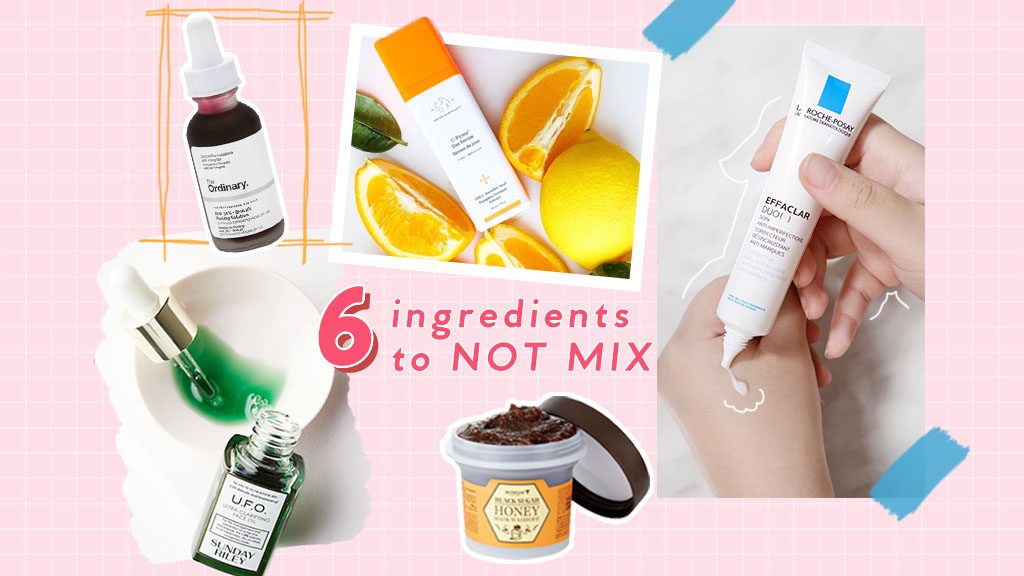
Sometimes, some things in life won’t go together. When we think we’re doing something good, it’s turning out just to be the opposite. The same applies for our skincare routine. Everything is a complicated process that can easily lead to a terrible skincare mistake! So instead of soft and glowing skin, you’re going to see skin irritation, more breakouts, and even premature aging. Eek!
1. Vitamin C with AHAs/BHAs or Benzoyl Peroxide
Ahh, Vitamin C. It’s a well sought out ingredient for a good reason too! Despite being temperamental, many swear by how it brightens skin and minimizes uneven skin tone, hyperpigmentation, and acne scars. It’s so popular that you can walk into any drugstore and find them in your daytime moisturizers and cleansers.
BUT! Lo and behold, when you combine vitamin C with AHAs and BHAs such as glycolic acid and salicylic acid, the pH or the level of acidity of the product changes. And why is pH so important to know?
In a nutshell, our skin has an ideal pH to keep its health balanced. Think of it as one of those balancing scales you once used at your high school science class. If the skin’s pH balance is disrupted, you’re likely to see red and inflamed skin (high acidity) or dry and flaky skin (low acidity). AHAs naturally work best at a low pH level, which then causes your skin to become more acidic. Add vitamin C into the mix and the pH level will veer more towards the acidic end.
So, is this combo a skincare mistake worth nixing over?
Theoretically, this combination is a concern because of its very high acidity. If you have sensitive skin, this coupling is not such a great idea. But that’s not to say that you shouldn’t use these ingredients! You can greatly reduce unwanted irritation by using each ingredient every other day. You can even space them out according to your daytime and nighttime routines. We definitely recommend using vitamin C in the morning with your sunscreen for an extra boost in protection!
Product Recommendations
2. Benzoyl Peroxide and Retinols
If you struggled with acne, you might have turned to benzoyl peroxide. Likewise, if you wanted to treat and reduce wrinkles, you’ve probably heard of retinol. Put them together and…well, let’s say it’s not the best for ultra sensitive skin.
Benzoyl peroxide and retinol are very potent ingredients and can pack an intense punch for acne. On sensitive skin however, it’s possible that the potent nature can irritate your skin even further. In this case, retinol and benzoyl peroxide can cause your skin to flake, peel, and in bad cases: redden, blister, and scar! Essentially it’s like you’re rubbing sandpaper against sandpaper. Definitely a mistake!
Fortunately, you can use both benzoyl peroxide and retinol, given that you use one product in the morning and one at night. We recommend using a lower-concentration retinol at night to prevent irritation, and benzoyl peroxide with a concentration less than 5% during the day as a spot treatment.
Product Recommendations
3. Spin Brushes and Exfoliants
I’m sure you’ve heard about exfoliation and how it benefits the skin by buffing it free of dead skin cells to bring out the beautiful and glowing skin underneath. But did you know that there is such a thing as over-exfoliating?
Exfoliants can come in two different types: physical (manual) and chemical.
When you physically exfoliate your skin, you’re probably familiar with using loofahs, sonic brushes, cleansers, or scrubs containing granules such as sugar, crushed walnut shells, apricot pits, ground coffee beans, or even rice flour.
While it’s all good to use these products to exfoliate your skin (and really, you should!), being too rough or applying intense pressure can cause microscopic tears under the skin’s surface and even the blood vessels to break. It also doesn’t help if the granules of the exfoliant are big enough to make your skin red and raw! And if you’re using a brush on top of the abrasives, ABORT MISSION!
Then, how should we exfoliate safely and avoid a skincare mistake?
If you’re planning on using an exfoliating scrub, test the product by rubbing a small dollop onto the back of your hand. If you notice any discomfort, redness, or irritation, stop using the scrub and opt for one that’s fine-milled or can dissolve under body temperature.
Lastly, be gentle! In this scenario, the harder you scrub does not give good results. Instead, massage your face lightly using your pinky fingers (and the exfoliator) in gentle circles so that you’re not placing too much pressure onto your skin. Another option is to skip sonic brushing all together and opt for a chemical exfoliant to get the job done.
Product Recommendations
4. Exfoliators and Skin Brightening Products
Whether it’s toning lotion or grainy scrubs, exfoliators work by encouraging dry and dead skin cells to be removed – so that your brand new, baby soft skin can shine through.
Both do sound very good, but why is this considered a skincare mistake?
Thing is, ‘brightening’ products often contain alpha hydroxy acids, which encourage skin cells to peel and therefore do pretty much the same thing! This double dose of exfoliation can lead to your skin becoming sensitive and super dry.
Product Recommendations
5. Acne Treatments and Chemical Exfoliants
Popular acne treatments containing benzoyl peroxide are effective because it gets rid of break-out causing bacteria in the skin. Likewise, chemical exfoliants like salicylic acid (BHA) also help to reduce acne, but using both together can lead to a red, flaky and kind of painful mess!
But here’s the confusing thing, benzoyl peroxide and some topical exfoliants (such as salicylic acid) can actually work together in some doses to fight acne, but they can also cause increased irritation to the skin.
So what can you do to reduce a potential skincare mistake?
The best thing to do is to alternate their use. It’s best to exfoliate one to two times a week, so if you’re using benzoyl peroxide one day, use the chemical exfoliant on another day. Make sure to moisturize right after and apply SPF in the mornings before heading out!
Product Recommendations
6. Face Oil and Hyaluronic Acid
Have you ever asked the question: what order should I apply all my products? Oils then creams? SPF then makeup? Retinol and then BHA?
There’s a lot of discussion and some occasional heated arguments over this. Because although it’s not considered a skincare mistake, there’s no right answer to this question. But for the sake of simplicity, we’ll choose the safest route.
The general rule is that you should apply products from lightest to heaviest. Because generally products that are thinner and more watery will tend to have smaller particle size, meaning they can penetrate deeper into the skin – these include toner, essence, serums – use these first. Then use oils and creams to seal it all in. Boom. Done.
Hyaluronic acid is extremely moisturizing and great for oily acne prone skin. But because hyaluronic acid is water-based, it can’t penetrate the oil, meaning it can’t get to your skin to do its job. So if you put oils on before hyaluronic acid, it just sits on top of that barrier.
Instead, it’s better to apply hyaluronic acid first before layering it with a face oil on top. An even better pairing is hyaluronic acid and retinol, for achieving youthful and hydrated skin.
Product Recommendations
For more detailed information on skincare combinations, check out the full video:
Head over to more information and product recommendations:

